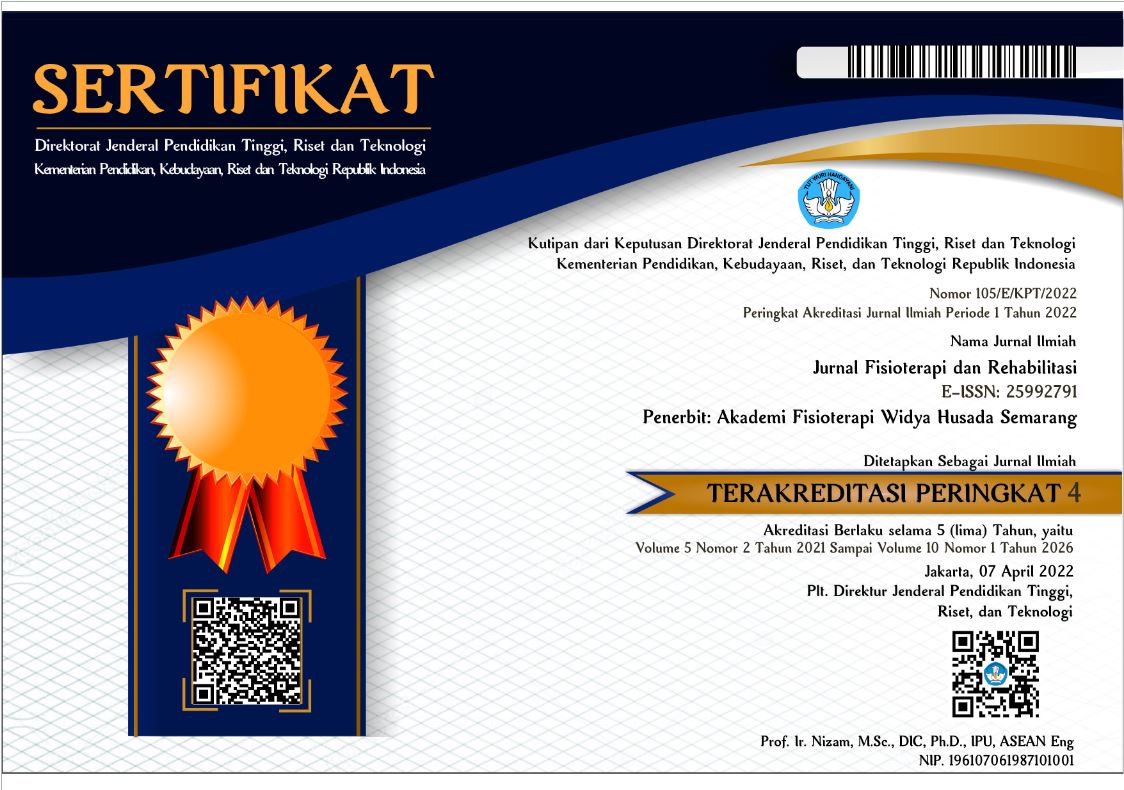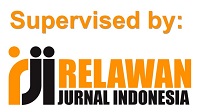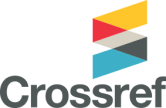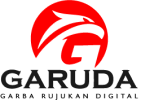Pengaruh Dual-Task Training (Motor-Cognitive) terhadap Keseimbangan Dinamis pada Anak Usia Sekolah
Abstract
Background : School-age Children are characterized by agile movements and motor activity coupled with the need to begin exploring the environment so that motor skills are needed. One aspect of motor skills is dynamic balance. Dual-task training (motor-cognitive) is a method of training that combines motor and cognitive tasks. The purpose of this exercise is to activation pattern of circuits in brain to achieve an adaptive system so that automation can be generated which can affect dynamic balance. Methods : this research is experimental quasi with time series design. The sampling technique used purposive sampling with a sample size of 30 students in 10- and 11- years-old who were not flat foot, not obese, and did not experience balance disorders. Primary data collection is obtained through dynamic balance instruments with balance beam walking test. The collected data used Shapiro Wilk for the normality test and obtained a value of p <0.05, which means that the distribution of data is abnormally distributed then a difference test of the of the pre-test and post-test using Friedman post hoc Wilcoxon Test. Results : the study was conducted for four weeks with 12 training sessions. The result of the analysis were started from pre-test, post-test 1, post-test 2, post-test 3, and post-test 4. The results overall showed a changed in dynamic balance between before and after 12 times of exercise with a significant value p=0,0001 (p <0,05). Conclusion : Therefore, it can be conclused that there is an effect of dual-task training (motor-cognitive) to dynamic balance of school-age children.
Keywords : Dual-Task Training (Motor Cognitive), Dynamic Balance, School-age Children
Downloads

This work is licensed under a Creative Commons Attribution 4.0 International License.
The use of the article will be governed by the Creative Commons Attribution license as currently displayed on Creative Commons Attribution 4.0 International License.
Author’s Warranties
The author warrants that the article is original, written by stated author(s), has not been published before, contains no unlawful statements, does not infringe the rights of others, is subject to copyright that is vested exclusively in the author and free of any third party rights, and that any necessary written permissions to quote from other sources have been obtained by the author(s).
User Rights
JFR's spirit is to disseminate articles published are as free as possible. Under the Creative Commons license, JFR permits users to copy, distribute, display, and perform the work. Users will also need to attribute authors and JFR on distributing works in the journal.
Rights of Authors
Authors retain all their rights to the published works, such as (but not limited to) the following rights;
- Copyright and other proprietary rights relating to the article, such as patent rights,
- The right to use the substance of the article in own future works, including lectures and books,
- The right to reproduce the article for own purposes,
- The right to self-archive the article
Co-Authorship
If the article was jointly prepared by other authors, any authors submitting the manuscript warrants that he/she has been authorized by all co-authors to be agreed on this copyright and license notice (agreement) on their behalf, and agrees to inform his/her co-authors of the terms of this policy. JFR will not be held liable for anything that may arise due to the author(s) internal dispute. JFR will only communicate with the corresponding author.
Miscellaneous
JFR will publish the article (or have it published) in the journal if the article’s editorial process is successfully completed. JFR's editors may modify the article to a style of punctuation, spelling, capitalization, referencing and usage that deems appropriate. The author acknowledges that the article may be published so that it will be publicly accessible and such access will be free of charge for the readers as mentioned in point 3.












